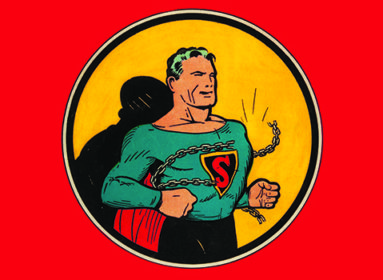There is much to be learned from the Jewish response to tragedy, says Yale professor
By Cindy Mindell
How can a culture survive destruction and exile and renew itself when its leading institutions have been devastated? Yale religious studies professor Hindy Najman explores the Jewish response to tragedy – the destruction of the First and Second Temples, exile, and return – in “Galut and Hitgalut,” a course offered by the Bureau of Jewish Education in Stamford.
A scholar of ancient Judaism, Najman’s areas of expertise are Second Temple Judaism, Hellenistic Judaism, Hebrew bible, early rabbinics, and the history of Jewish interpretation. Her primary focus is the history of concepts in ancient Judaism. After receiving her BA from Stern College, Yeshiva University, Najman completed her MA and PhD at Harvard. She taught at Notre Dame University and at University of Toronto, where she was director of the Centre for Jewish Studies. She joined the religious studies department at Yale in 2011.
Najman spoke with the Ledger about how Judaism developed a “prescription” to move through, and make sense of, tragedy.
Q: How did you develop your scholarly interest and focus?
A: I was brought up in a family that was deeply committed both to Judaism and intellectual pursuit… I was brought up with a profound commitment to literature, music, and culture, and also to Jewish texts, tradition, and thought. Trying to figure out how to combine those areas of interest in a way that has both intellectual integrity, as well as responsiveness and responsibility to my own tradition, is the task of a lifetime.
I did my PhD at Harvard, and chose to work with James Kugel [chair of the Institute for the History of the Jewish Bible at Bar Ilan University in Israel and professor emeritus of classical and modern Hebrew literature at Harvard University] I chose him because he’s a brilliant literary figure who writes poetry and understands the interpretive creativity of ancient Judaism in general and ancient Jewish poetry in particular. Working with him gave me an opportunity to be in conversation with the broader context of other kinds of poetry, and with the history of creative poetry and work and writing. To work in history and philology is never to stop reading literature and poetry.
The other part of my work is deeply immersed in Jewish thought and philosophy; one of my areas of interest is the history of Jewish concepts and thought.
I am engaged in figuring out how to be a Jew in and of this world – how to give back to the world as a Jew, and how to be influenced and transformed by the world around us. This involves a kind of optimism: the belief that there is improvement as we move forward, that we don’t have to go back to get insight.
As a scholar, I study how trauma, destruction and tragedy were processed and integrated into the self-understanding of ancient Jewish texts and traditions. I am interested in biblical and rabbinic texts, but I am also interested in texts that are less normative such as the writings of Philo of Alexandria and the Scrolls discovered near the Dead Sea in 11 caves in the 20th century. I enjoy surprising my students with texts they have never seen from the Jewish past which can illuminate our present.
Q: What is “From Galut to Hitgalut” about?
A: The course explores how Judaism needs to redefine itself in the space of the destruction of the First Temple. It also investigates how Jews negotiate the diaspora, and how Jews negotiate the failures and disappointments of the rebuilding of the Second Temple and its eventual destruction.
Some of the texts we look at are Ezra, Nehemiah, and Esther. We talk about how the rededication of the community to Judaism happens in the diaspora and in Israel. The experience of traumatic destruction, the recovery from trauma, and the successful reconstitution of Judaism against all odds have become essential aspects of our tradition. We have been able to access this sad but hope-inspiring dimension of Judaism in order to respond to more recent tragedies.
Q: What are some differences in the response to the destruction of the First Temple and that of the Second Temple?
A: The two destructions occurred several centuries apart. The first Temple was destroyed in the 6th century BCE, while the second was destroyed in the 1st century CE. In both cases, the Temple was regarded as the sacred center of the life of the people of Israel, and its destruction was all but unthinkable. Of course, much had changed – politically, culturally, linguistically – between the two traumatic events. Two points stand out. First, the first destruction was never fully overcome and the Second Temple was never fully accepted as a replacement of its predecessor. Second, the Jewish imagination linked the two destructions and even collapsed them into one. On the one hand, this intensified the sense of loss. On the other hand, it sowed the seeds of a general strategy. All the destructions – of the Temples, of the Rhineland communities in the Crusades, and so on – are parts of a single disaster, and all our partial attempts at recovery are parts of a single restoration that will ultimately succeed. This strategy began long before the rabbinic period, but it was developed and refined by the rabbis, and enshrined in the kinot [lamentations] that we say on the Tisha B’Av fast.
Q: How do the “prescriptions” for mourning the destruction of the Temples apply to how Jews are to respond to other tragedies like the Newtown school shootings?
A: The first prescription is that no response can be prescribed to the mourners. Rather the victims and families who are in mourning must be given the time to formulate their own response to the tragedy. This is the significance of the halachot that give the mourner an immediate period of aninut or limbo, and that enable the mourner to set the terms of conversation during the period of shiva. For now it is our burden to listen and to help in all of the ways that they ask for help and support. Only after a period of silence and listening can a narrative of comfort and hope gradually emerge. Only after time has been allowed for the individuality of loss, can the individual loss be linked to a more general narrative of hope. Then texts from the written and oral Jewish traditions and our own history of trauma, destruction and recovery can offer words of mourning, compassion, and healing. As Jews and as Americans, we offer our ears and our support to our friends who have suffered tragedy and devastation in Newtown. To be a Jew is to live within one’s tradition, but also to be an example and a citizen of the world.
Prof. Najman’s course, “From Galut to Hitgalut: Rededication and Self Sacrifice in Second Temple Judaism,” will be held on Wednesdays, Jan. 16, 23, & 30, 8-9 p.m. at the Stamford JCC, 1035 Newfield Ave. The course if free and open to the community. For more information call (203) 321-1373.
Comments? Email cindym@jewishledger.









 Southern New England Jewish Ledger
Southern New England Jewish Ledger















